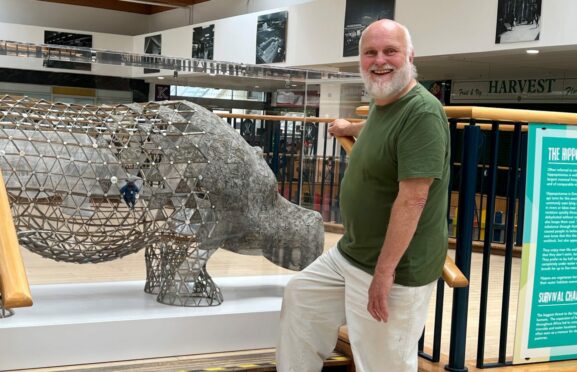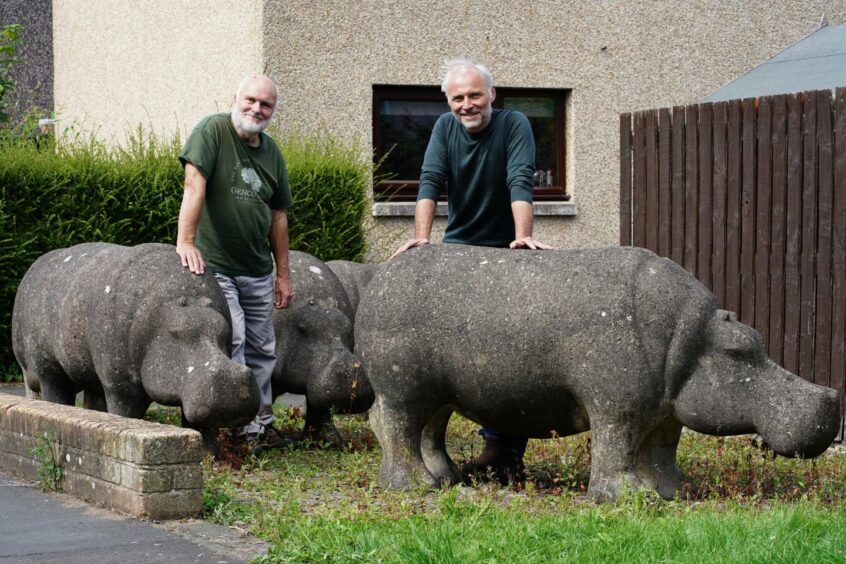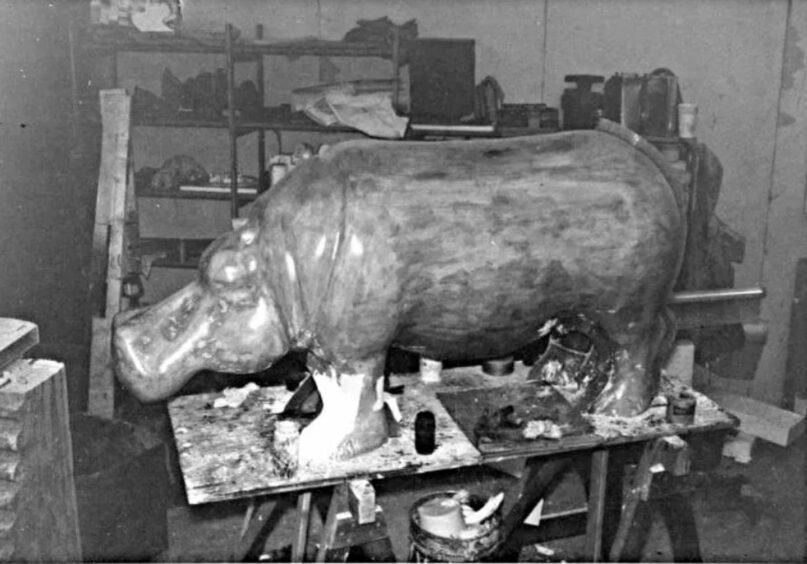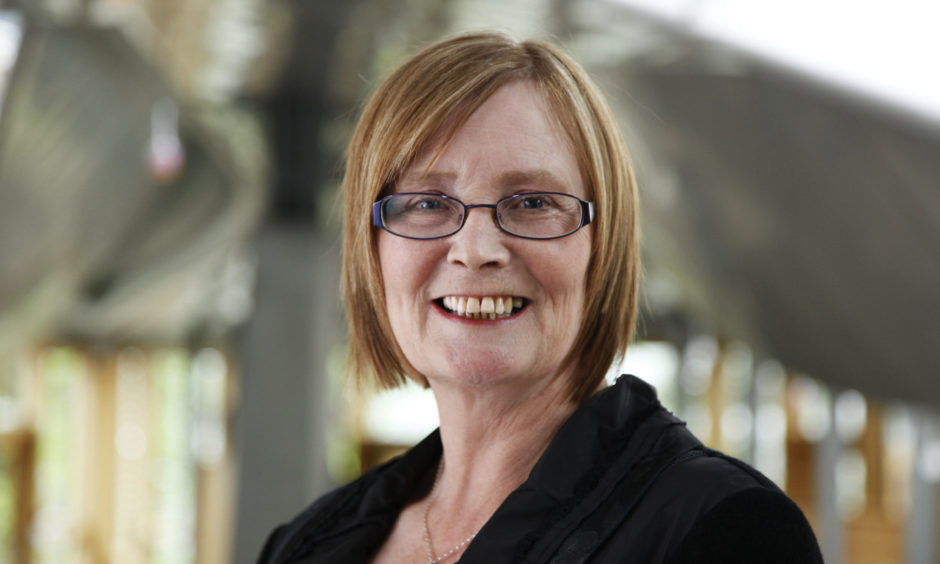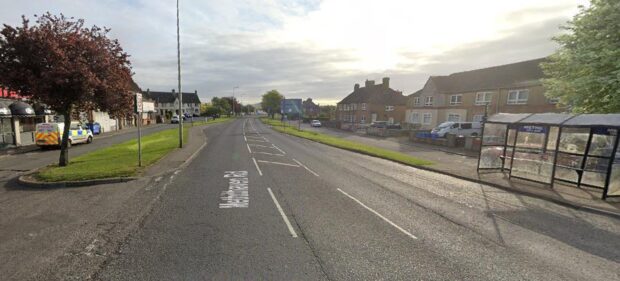A new version of the iconic Glenrothes hippo has been unveiled as the town celebrates its 75th anniversary.
Artist Stanley Bonnar, who created the first hippo sculpture back in 1973, has returned to the town 50 years on having completed his latest artwork.
The hippo, which feature in a number of locations and adopted by locals, has gone on to become the unofficial symbol of the former New Town.
Entitled The Disappearing Hippo, Stan says the new artwork is not only designed to connect with his 50-year-old concrete structures, but confronts the challenges of today’s world.
Latest edition to town’s public art collection
It is constructed using recycled tin cans and other sustainable materials to bring a conservation message.
The new design presents a solid hippo gradually disappearing as a symbol of the global demise of this species, due to poaching and global warming.
Ian Wilkie from Glenrothes manufacturing company, Leviton, came up with the idea to coincide with the town’s anniversary.
Stan, whose work in Scotland’s New Towns was told in a recent BBC documentary presented by his actor son Mark Bonnar, is an award winning environmental artist and philosopher.
He was also a lecturer at Glasgow School of Art.
Stan was encouraged out of retirement to re-create an animal that has become a legacy both for him and Glenrothes.
New sculpture warmly welcomed
The addition to the town’s burgeoning collection of 160 public artworks and sculptures spanning back to 1964 has been welcomed by locals.
Former Glenrothes MSP, Tricia Marwick, a long-standing champion of the town’s art collection, said the new addition was “fitting”.
She said: “Our hippos, originally created by Stanley Bonnar, as so associated with Glenrothes.
“How fitting is it that Stanley is now creating a new hippo artwork to celebrate the 75th anniversary of the town.
75th anniversary of creation of Glenrothes
“I’s sure that the townsfolk will appreciate his latest creation.”
Her thoughts were echoed by, Linda Ballingall, founder of Glenrothes Heritage Centre, who said the new artwork was “magnificent”.
She said: “It’s wonderful to see Stanley back in Glenrothes and what a magnificent sculpture.
“It’s great to see the continuation of the hippo theme which has become such a recognisable image of Glenrothes.
“It’s fitting given that its 50 years since the first hippo appeared and 75 years since the town was created.”
The town boasts a rich history of public art becoming the first town in the UK to advertise for a town artist.
David Harding held the post from 1968 until 1978
He was then followed by Malcolm Robertson who continued creating public sculptures in the town until 1990.
Two of its artworks hit the headlines in January after they were thought to have been stolen sparking a police investigation.
They were later discovered in a Council depot.
